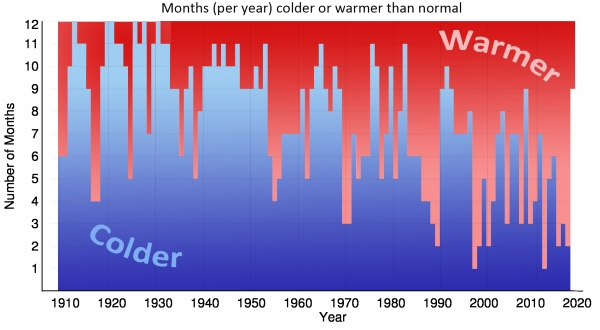If you thought summer lasted until the very last day of March, you’d be right.
NIWA today released its March Climate Summary which confirms temperatures during the first month of autumn were at record highs in many places.
Officially, this March was the second equal hottest on record, tying with March 1999 and just behind March 1968. According to NIWA’s long-term temperature record the Seven Station Series, last month’s temperature was 1.89ᵒC above average.
The first three months of this year have been the fourth warmest start to the year since records began in 1909.
NIWA principal scientist climate Dr Brett Mullan says the high March temperatures were consistent with our warming climate and when seen in context with other warm months a clear trend was evident.
NIWA climatologists use averages spanning a 30-year period from 1981 to 2010 as the basis of their calculations.
“There were six years before 1930 which did not have a single month in the year warmer than the 1981-2010 average. But in 1998 and 2013 11 out of 12 months were warmer than normal.”
Dr Mullan also says that of the past 100 months from December 2010 to March 2019, 70 were warmer than average and 30 colder than average.
“If New Zealand had maintained the climate it had from 1981 to 2010, we would have expected a 50:50 split. This is a huge divergence.”
So far this year, each month has been warmer than normal.
“The increasing frequency of warm months versus cold months is clear evidence of a warming climate. Greenhouse gas increases are the driving factor behind the progressive warming for New Zealand and the globe,” Dr Mullan said.
“We can expect high temperature records to be broken with increasing frequency over the coming years.”
New Zealand’s six main centres all recorded well above average March temperatures with Dunedin experiencing its warmest March on record. The highest temperature of the month was 32.4ᵒC at Waipara on March 5.
Rainfall was below normal (50-79% of normal) or well below normal (<50% of normal) for five of the six main centres.
From Cape Reinga to the bottom of the South Island, record mean air temperatures were reached last month. Also of note was Ranfurly with a mean maximum temperature during March of 23.4°C, which is 4.0°C warmer than average and the highest since records began there in 1897.
Warmer than average sea surface temperatures persisted throughout March and marine heatwave conditions continued in the Tasman Sea and in parts of New Zealand’s coastal waters.
Meanwhile, Australia has just experienced its hottest March on record, and its hottest first quarter of the year ever recorded.

